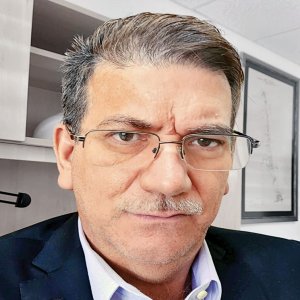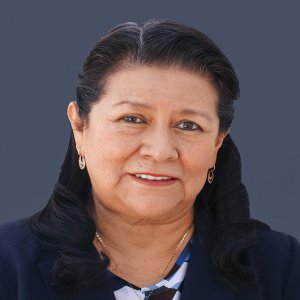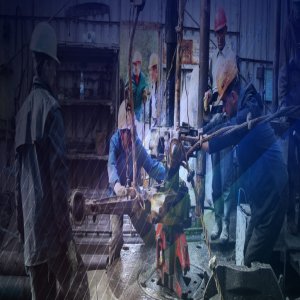Paths of Reactivation for Offshore Development

STORY INLINE POST
Q: How have Saipem Offshore’s operations in Mexico been affected by the economic crisis and the pandemic?
A: The immediate activation of Saipem Crisis Unit, which coordinates more than 50 control units around the world, the adoption of adequate healthcare protocols and worker rotation procedures at the operating sites, as well as the acceleration of the remote work programme - since mid-February - gradually extended to all employees, and constant coordination with clients and suppliers, enabled to progress project activities, albeit within the limits posed on mobility and the need to safeguard the health of people, which remains the company’s top priority. However, as many companies, we are also facing some delays in projects due to the pandemic.
As you know, a significant number of PEMEX projects have been suspended, postponed or canceled, some of which we were actively pursuing together with various fabricators in Mexico. While waiting for the reactivation of these major projects, we have continued to pursue and be involved in some smaller ELM platforms and transport and Installation projects that have continued during 2020 despite the pandemic and economic crisis.
There are around 15 ELM shallow water projects that PEMEX has not suspended. We have vessels in the area that could install them and we have continued our engagement with the EPC fabricators involved to provide a competitive T&I solution. The pandemic has also created a tendency in most EPC contractors in Mexico to request a quote for T&I services approximately a month before the installation is due, normally already finding themselves in delay. We are highly adaptable and can cater for these situations subject to our own vessel’s availability but normally encourage and openly advise Mexican EPC contractors to engage with us much sooner to allow all relevant engineering and safety analysis that must be performed before an installation in order to provide the level of excellence that we are accustomed to. Fortunately, a number of these projects are scheduled for the end of the year or early next year, and we are participating in those.
In addition, while PEMEX has announced suspensions and postponements of a number of projects this year due to the pandemic, there are other players who have decided to push forward with their projects. For example, CFE decided to relaunch one project, in particular for a deepwater pipeline in the Sea of Cortez. This project dates back to 2012 and has gone through several rounds of suspensions and reactivations. We have been actively following it up and discussing it with the various Operators and have already performed a significant amount of engineering for it. It seems that it is now expected to be reactivated by the end of this year. Another important player that has announced its intentions to continue its developments in Mexico as originally scheduled is Talos, specifically regarding its partnership with PEMEX and the unification of the Zama field. Trion from BHP is another example of a deep water development in the Gulf of Mexico that fits well within our strategic capabilities. The efforts to reactivate the Lakach project are still ongoing as well, despite some delays due to the pandemic. In general, we see greenfield projects that can add significant volumes of production being prioritized over brownfield projects involving maintenance or reconfigurations of existing platforms.
Q: How are you reorganizing your participation in the Lakach project?
A: From our side, everybody involved is doing their best to help Pemex out and allow a prompt reactivation of the project. For now, everything is being done digitally with PEMEX due to the pandemic and we note that there have been some impacts on the reactivation schedule. There are still some significant steps to go through and given the suspension period, there is a real risk that Pemex loses the opportunity of developing Lakach all together if further delays continue. I cannot disclose more details on the status of the project from PEMEX, but I can say that we are doing our best from our side to aid in this reactivation process. As of today, most of the decisions and steps to be taken to allow a reactivation are on Pemex. We hope they can have their due diligence done soon and to allow a reactivation of this project.
Q: How is the company consolidating its markets?
A: In order to meet the challenges of an industry in evolution, Saipem’s E&C Offshore Division has recently launched an internal reorganization program that was named Extraordinary Evolution. First of all, we optimized our operating and organizational structure by creating three business lines: CORE, Green and Solutions.
The CORE business line encompasses all our traditional and main competencies in offshore construction, like conventional field development (fixed platforms and facilities), shallow and deep waters pipelines and subsea field developments. The Green business line was created to cater all renewables developments, it is a very exciting new function in our family. While we have performed renewable contracts for some years now, we now have a dedicated unit to better address the needs of this emerging and thriving industry. Solutions will create a new capability to provide long-term services to our customers, like maintenance and operation of plants, life of field and other digital and innovative services.
As part of the Extraordinary Evolution program, to be closer to our clients, we have also rationalized our geographical presence, created the role of dedicated key account managers and gave new responsibilities to our Country Managers on local business development. Within the Americas, for instance, we are addressing key markets with dedicated Country Managers in Mexico, Brazil, the US and Guyana where we already have established offices and HUBs. Thanks to this new organization, we believe that we will manage to better leverage on our world class assets and competencies and we will be able to cater for any type of project in the oil and gas and renewables sectors.
Q: What are your main growth and development objectives for Mexico?
A: We mentioned to you last year that Saipem’s core strategy in Mexico was to focus on deepwater developments and offshore pipeline and SURF projects. That has not changed; we are still focused on reeling in those kinds of projects with various operators in the Gulf of Mexico. Given our expertise and capabilities in deepwater developments and iconic flagship assets like the Saipem Constellation and FDS2 as well as the new Spool Base, we are very well positioned to cater a wide range of SURF EPIC projects which could be of interest to a variety of operators like Pemex, Talos, BHP and even midstream contractors such as Enbridge with whom Saipem has a longstanding relationship.
To sum up, while we are prioritizing our efforts towards the reactivation of Lakach with Pemex, we are also focused in participating in T&I ELM projects to be installed by the Constellation vessel, while still actively showcasing our capabilities and assets to cater for other deepwater developments by a variety of operators.
Saipem is a leading company in engineering, drilling and construction of major projects in the energy and infrastructure sectors. It is organized in five business divisions: offshore E&C, onshore E&C, offshore drilling, onshore drilling and XSIGHT, dedicated to conceptual design. Listed on the Milan Stock Exchange, it is present in over 70 countries worldwide and has 35,000 employees of 120 different nationalities.








 By Pedro Alcalá | Senior Journalist & Industry Analyst -
Mon, 08/17/2020 - 10:15
By Pedro Alcalá | Senior Journalist & Industry Analyst -
Mon, 08/17/2020 - 10:15








